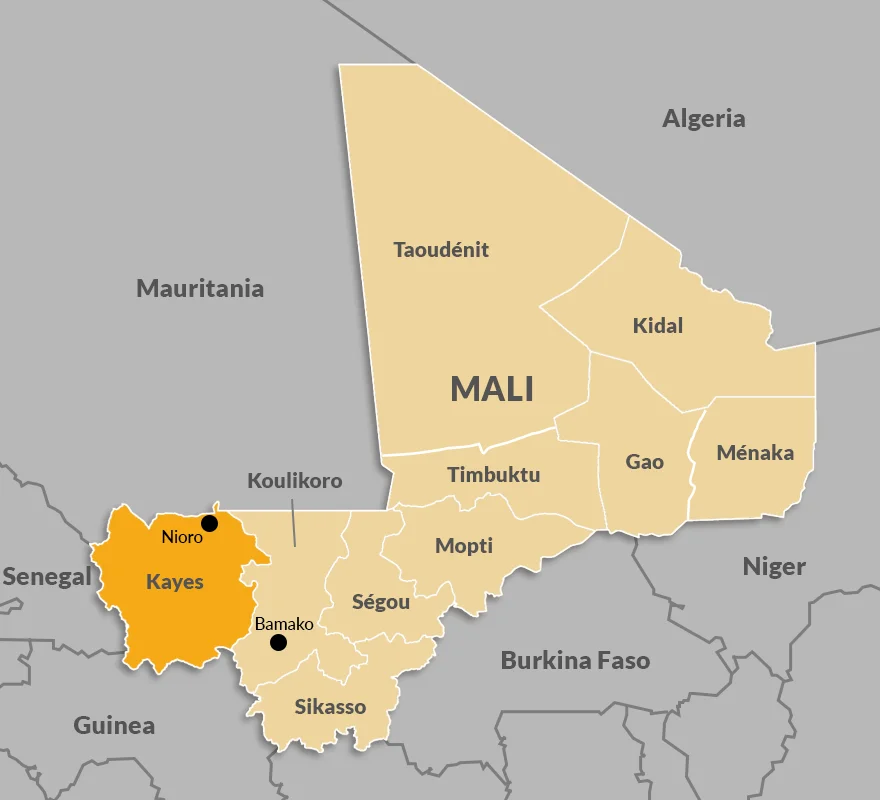Mali’s a place that grabs you with its stories. It’s a huge, landlocked chunk of West Africa, wedged between the Sahara Desert’s edge and green river valleys, with a past that’s as wild as its terrain. From ancient empires that ran the show to today’s struggles with rebels and dust storms, Mali’s got a vibe that’s equal parts epic and gritty. Let’s break it down—where it is, who’s there, what shaped it, and why it’s worth knowing.

A Quick Look at the West African Nation
Mali’s a massive, landlocked country in West Africa with a wild mix of desert, rivers, and history that’s straight-up epic. From ancient empires to modern-day struggles, it’s a place full of stories and grit. Here’s the rundown.
Where Mali Is and What It’s Like
- Huge chunk of West Africa, 1.24 million square km, surrounded by Algeria, Niger, Burkina Faso, Côte d’Ivoire, Guinea, Senegal, Mauritania.
- South has savanna for farming millet, rice, cotton; middle’s Sahel, scrappy and dry; north’s Sahara Desert, hot as hell (46°C in Timbuktu).
- Niger River (1,693 km) is Mali’s lifeline for crops, fish, trade. Only 5.6% of land’s farmable, 65% is desert.
- Rainy season (April-Oct) in south, droughts hit hard, harmattan dust storms suck in the north.
Mali’s People and Culture
- Over 40 ethnic groups: Bambara (34%), Fulani, Malinke, Dogon, Bozo. Bambara’s the go-to language for 80% of folks.
- Griots sing history with kora; music’s huge (think Ali Farka Touré). Artisans make gold jewelry, mud cloth—70% live off crafts.
- 95% Muslim, but chill with traditional beliefs mixed in. Family’s big—elders rule, kids pitch in early.
- Tough life: 40% below poverty line, 19% in extreme poverty, 32% youth unemployment in Bamako.
Mali’s History in a Nutshell
- Home to Ghana, Mali, Songhai empires (300 AD-1600s). Mansa Musa’s gold made Mali Empire crazy rich in 1300s.
- France took over in 1890s (French Sudan). Independence in 1960, but socialism tanked economy under Modibo Keïta.
- 1990s brought democracy; 2012 Tuareg rebellion and coups (2020, 2021) messed things up.
Mali Today: The Struggle’s Real
- North’s a warzone with jihadists since 2012. Coups put Colonel Assimi Goïta in charge; Russia’s Wagner group’s involved.
- Economy leans on gold (Africa’s #3 producer), cotton. 4% GDP growth in 2024, but power shortages and poverty (90% rural) hurt.
- Climate’s rough: droughts, locusts, floods. Only 12% of water resources used—irrigation could help but needs cash.
- Press freedom’s in the constitution, but journalists get scared off. Slavery (200,000 people) and trafficking are big issues.
What Makes Mali Stand Out
- Timbuktu’s Sankoré Madrasa and Djenné’s mud-brick Great Mosque are UNESCO gems. Dogon cliff villages are wild.
- Niger River ties it together; Bamako’s a bustling hub. 13 local languages official since 2023—French is just for work.
- Warm people, big on greetings. Music and festivals like Ségou’s Festival on the Niger pop off despite the chaos.
Where Mali Sits and What It Feels Like
Mali’s parked in the middle of West Africa, surrounded by Algeria, Niger, Burkina Faso, Côte d’Ivoire, Guinea, Senegal, and Mauritania. It’s massive—1.24 million square kilometers, bigger than Texas and California combined—but only about 23.8 million people call it home as of 2023. Most live in the south, where the Niger River makes life possible. The north? That’s Sahara Desert, all sand dunes and scorching heat. Places like Timbuktu and Gao can hit 46°C (115°F), and Kayes gets called the “pressure cooker of Africa” for a reason.
The land splits into three zones. The south’s got savanna, good for growing millet, rice, and cotton—60% of Malians farm to survive. The middle’s the Sahel, scrappy with patches of grass and thorny bushes. The north is pure desert, where you’re more likely to see a camel than a raindrop. The Niger River, stretching 1,693 kilometers, is the country’s backbone, feeding crops, fish, and trade routes. Without it, Mali’d be toast. The Senegal River helps too, but it’s smaller.
Weather’s a beast. The south gets rain from April to October, but droughts hit hard—sometimes crops just die. The north’s dry as a bone, with harmattan winds whipping up dust storms that make breathing a chore. Floods can swamp the Niger’s banks, great for rice but a pain for villages. Only 5.6% of Mali’s land is farmable, and 65% is desert or close to it, so making a living ain’t easy.
The People: Mali’s Heart and Soul
Mali’s a cultural mosaic, with over 40 ethnic groups mixing it up. The Bambara are the biggest, about 34%, followed by Fulani herders, Malinke farmers, Soninke traders, and Dogon cliff-dwellers. Bozo folks stick to the rivers, fishing for a living. They all speak their own languages, but Bambara’s the glue—80% of Malians use it to haggle or chat. It’s wild how they coexist, sharing markets and mosques despite their differences.
Culture’s where Mali shines. Griots—storytellers who double as musicians—keep history alive with songs played on a kora, a 21-string harp thing that sounds like the desert itself. Guys like Ali Farka Touré took that sound global, blending it with blues. Artisans make crazy stuff: gold earrings, mud-dyed cloth, carved masks. Women, especially, keep this going—70% of Malians earn cash from crafts. Food’s simple but good—tô, a thick millet or corn porridge, gets dipped in peanut or okra sauce. In the north, it’s milk and dates; in the south, mangoes and bananas save the day when harvests suck.
Religion runs deep. About 95% of Malians are Muslim, so Ramadan and Eid are huge. But it’s chill—lots of folks mix in old-school beliefs, like ancestor spirits. Christians and animists hang out in the south, no big drama. Family’s everything. Elders are like royalty, and kids learn early to pitch in—girls cook, boys herd. Greetings matter; skipping a “how’s your family?” is rude. But life’s rough: 40% live below the poverty line, and 19% are dirt-poor, especially in rural spots. Half the population’s under 15, and with 32% youth unemployment in Bamako, finding work’s a nightmare.
Mali’s History: Epic Empires to Rocky Roads
Mali’s past is straight-up legendary. From 300 AD to the 1600s, it was home to the Ghana, Mali, and Songhai empires, the heavyweights of West Africa. The Mali Empire, peaking under Mansa Musa in the 1300s, was filthy rich from gold and salt. Musa’s pilgrimage to Mecca was so lavish—think camel caravans loaded with gold—that he crashed Egypt’s economy. Timbuktu was the spot, a trade and learning hub with the Sankoré Madrasa drawing scholars like moths to a flame. Griots still sing about those days, keeping the vibe alive.
The French rolled in during the 1800s, taking over by 1890 and calling it French Sudan. Warriors like Samory Touré fought back, but France won out. Mali got independence in 1960, first as part of the Mali Federation with Senegal, then solo on September 22, 1960, under Modibo Keïta. He went hard on socialism, but the economy tanked. A 1968 coup brought Moussa Traoré’s 23-year military rule. Things loosened up in the 1990s—Alpha Oumar Konaré won a fair election in 1992, and Mali was a democratic star for a bit under Amadou Toumani Touré from 2002.
Then 2012 hit like a wrecking ball. Tuareg rebels in the north, backed by Islamists, tried to carve out their own state. The Islamists turned on them, taking over Timbuktu and Gao. France jumped in to clear them out, but the north’s still a warzone with jihadists running wild. Coups in 2020 and 2021, led by Colonel Assimi Goïta, kicked out the civilian government. France bailed in 2022, and now Russian mercenaries are in the mix. Over 85,000 people were displaced in 2019 alone, and the U.S. says don’t travel there—too much kidnapping and crime.
Mali Today: Fighting to Stay Afloat
Mali’s economy leans on gold and cotton. It’s Africa’s third-biggest gold producer, and cotton’s a cash cow, but 65% desert land means farming’s a gamble. From 1965 to 1986, Mali was short on grain almost every year. Reforms and better rains helped, but 90% of poverty’s in rural areas. GDP grew 4% in 2024, thanks to telecom and crops, but power outages and less gold output hurt. With 46% of the population under 15, the pressure’s on to create jobs.
Climate’s a killer. Droughts, locusts, and floods wreck crops, and desertification’s eating arable land. Only 12% of Mali’s water resources are used—better irrigation could be a game-changer, but cash and stability are low. The government’s got plans like the 1985 desertification fight and 1998 environmental policy, but they’re slow-going.
Human rights are shaky. The constitution loves press freedom—40 newspapers, 50 radio stations—but jihadists and junta fans scare journalists into silence. Slavery’s real, with up to 200,000 people, especially kids, stuck in it post-2012. Trafficking’s bad too—boys in mines, girls in homes. Women deal with violence and inequality, though a ministry’s pushing back.
What Makes Mali Special?
Mali’s got a soul you can’t miss. Timbuktu’s ancient manuscripts and Djenné’s mud-brick Great Mosque, a UNESCO gem, scream history. The Dogon’s cliff villages in Bandiagara are like nowhere else, with art and rituals that draw adventurers. Music’s huge—griots, kora, and festivals like Ségou’s Festival on the Niger light up the place. The Niger River’s a lifeline, tying Bamako’s bustle to rural fishing spots.
In 2023, Mali made its 13 local languages official, kicking French to the curb as just a “working language.” That’s pride. People are warm—greetings are a must, and elders are bosses. Mali’s sitting on gold, uranium, and maybe oil in the Taoudeni basin. Tourism could boom with river cruises and desert treks, but insecurity keeps it quiet. Still, Malians hold tight to their roots, dreaming big.
Why Mali Sticks With You
Mali’s a land of old empires and new fights. Its music, mosques, and markets carry a history that shaped Africa, but it’s battling to feed and protect its people. The young crowd could change the game, but they need a shot. Mali’s not just a country—it’s a story of grit and glory that’s worth hearing.

